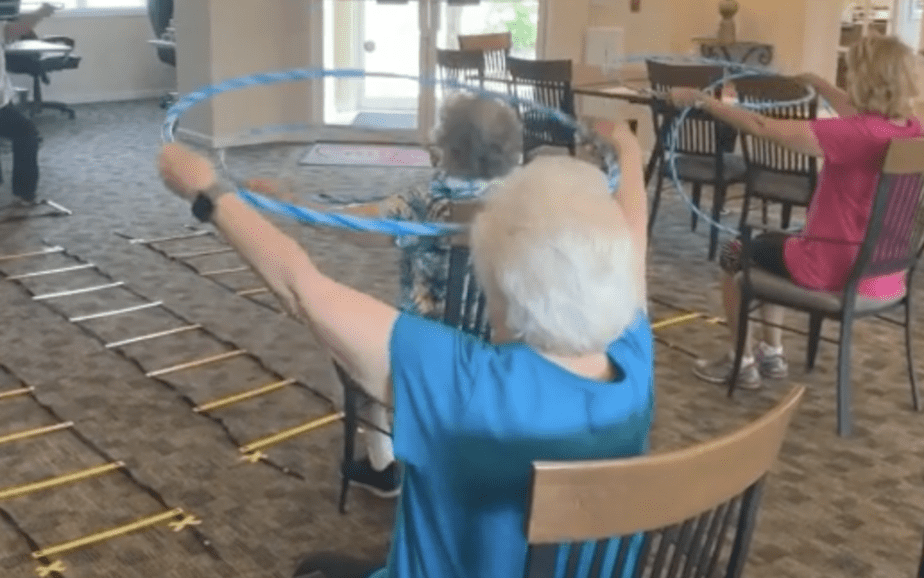
Seated Hula Hoop Group | Occupational Therapy Intervention
Seated Hula Hoop Group Intervention
Occupational Therapy Intervention : Group Intervention
Documentation and Activity Rationale
The patient engaged in a BUE AROM, mm Elongation, and generalized strengthening activity requiring them to hold the hula hoop at various points to elicit gross shoulder flexion, pronation/supination, internal/external rotation, scapular protraction/retraction. The patient perform 2×15 each movement pattern with noted fatigue at the end of sequence. Therapeutic rest offered.
Grading Strategies
Grading Up:
- complete standing as a dynamic balance activity
- complete with a weighted hula hoop
Grading Down:
- offer rest breaks between each set
Appropriate Diagnoses / Deficits
- Generalized weakness
- Balance deficits (when graded to a stand)
- Memory Changes
- Attention deficits [alternating/divided]
- CVA
- TBI




